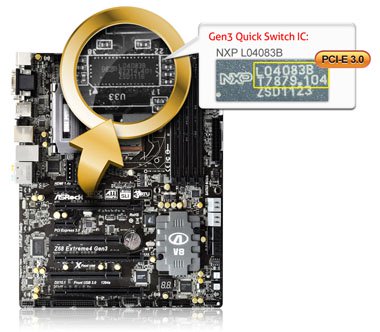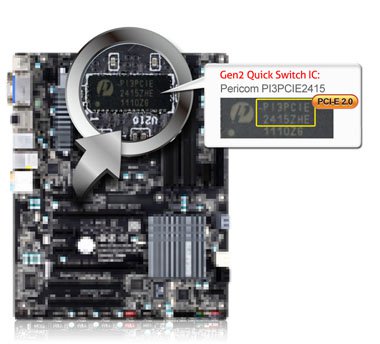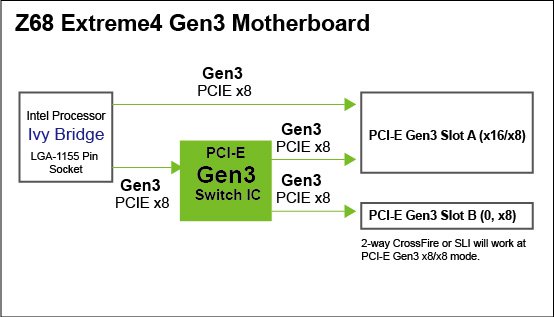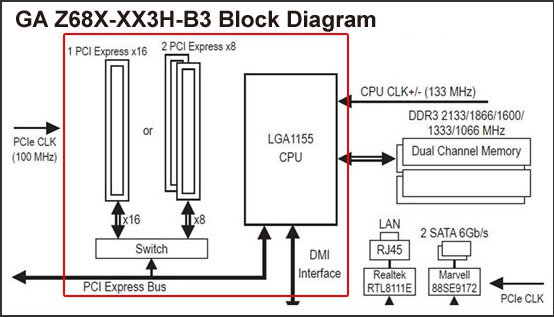
| True Gen3 v.s. Fake Gen3 |
|
Motherboards supporting the latest PCI-E Gen3 motherboards are arriving thick and fast at the moment. Choosing a new motherboard is quite a commitment. With dozens of PCI-E 3.0 motherboards flooding the market, how to buy a mobo that buy into the merits is a critical task. Since ASRock has unveiled several TRUE PCI-E Gen3 motherboards based on Intel Z68 and P67 chipsets, you don’t have to spend a fortune to pick up PCI-E 3.0 motherboard anymore. To enjoy the TRUE PCI-E 3.0 performance, PC requires next generation Intel 22nm processor, PCI-E 3.0 VGA card and PCI-E 3.0 motherboard. What will PCI-E 3.0 mainboards have to offer and how are they going to work? Taken reference to ASRock Z68 Extreme4 Gen3 and GA Z68X-XX3H-B3, you will see the difference between two boards. |



